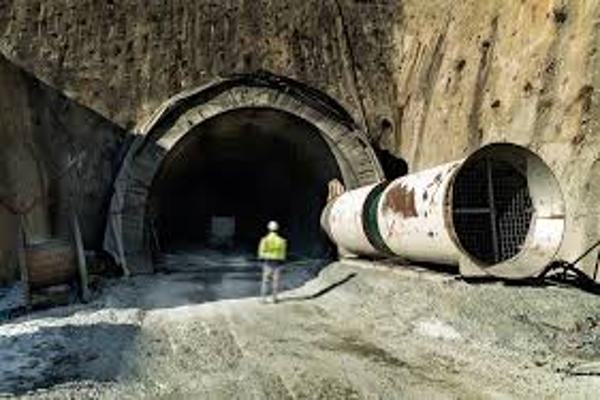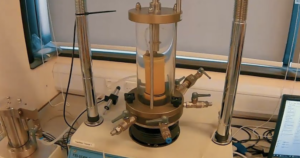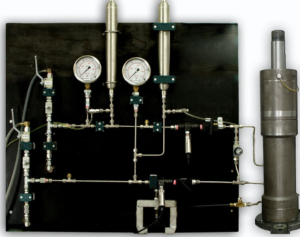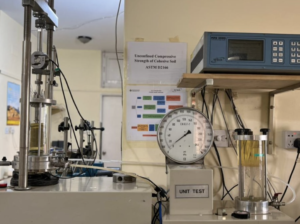How Do Geotechnical Triaxial Tests Improve Tunneling Projects in Industry?
Geotechnical triaxial tests1 are fundamental in tunneling projects, providing essential data on soil and rock properties under realistic underground conditions. By accurately capturing material behaviors, these tests enhance tunnel stability2, minimize risks, and optimize construction methods3. Below, we explore how triaxial testing positively impacts tunnel engineering, supported by relevant experimental data.
Strength Parameter Determination for Tunnel Design
Triaxial tests effectively measure crucial soil and rock parameters, including cohesion (c)4 and friction angle (φ)5, enabling precise assessment of strength and stability. For example, experimental studies on clayey soils typically yield:
| Soil Type | Cohesion (c’) kPa | Friction Angle (φ’) |
|---|---|---|
| Soft Clay | 15 – 30 | 22° – 28° |
| Stiff Clay | 40 – 60 | 28° – 35° |
| Sandy Clay | 10 – 20 | 30° – 36° |
Accurate determination of these parameters ensures safe and economically viable tunnel designs.

Evaluating Groundwater Impact on Tunnel Stability
Groundwater significantly influences tunnel behavior. Triaxial testing6 helps engineers evaluate effective stress conditions by monitoring pore-water pressures7. Experimental results commonly show:
- Saturated sands under undrained conditions experience pore pressure increases up to 80–100% of applied stresses, reducing effective strength.
- Clays exhibit variable pore pressure responses depending on consolidation conditions, impacting stability predictions.
Such data allow engineers to design robust groundwater management8 and drainage strategies.

Assessing Long-term Deformation of Tunnel Surrounding Rock
Long-term deformation tests (creep tests) on tunnel-supporting rock provide insights into potential time-dependent issues:
| Rock Type | Observed Creep Strain (%) | Testing Duration |
|---|---|---|
| Shale | 0.5 – 1.0 | 6 months |
| Limestone | 0.1 – 0.3 | 12 months |
| Sandstone | 0.2 – 0.6 | 9 months |
These experimental findings inform proactive tunnel maintenance and reinforcement designs, ensuring sustained structural integrity.

Optimizing Tunneling Methods Based on Triaxial Test Results
Data from triaxial tests allow engineers to select the optimal tunneling method. For instance:
- High shear-strength soils (φ’ > 32°, c’ > 40 kPa) support Tunnel Boring Machine (TBM) methods efficiently.
- Weak, cohesive soils (c’ < 20 kPa) often require careful excavation with immediate lining support, such as sequential excavation or NATM methods.
Experimental evidence demonstrates up to 25% reduction in overall project costs when tunneling methods are directly aligned with accurate triaxial test data.

Conclusion
Triaxial tests are essential tools that provide critical data on strength, groundwater effects, and deformation behaviors. By incorporating empirical data into tunnel designs, engineers significantly enhance project safety, cost efficiency, and long-term reliability in industrial tunneling applications.
-
Understanding Geotechnical triaxial tests is crucial for tunnel engineering, as they provide insights into soil behavior and stability. ↩
-
Exploring tunnel stability helps in understanding the critical role of soil testing in ensuring safe and efficient tunneling operations. ↩
-
Learning about construction methods can enhance project efficiency and safety, making it essential for successful tunneling. ↩
-
Understanding cohesion is vital for evaluating soil strength and stability, especially in construction and engineering projects. ↩
-
The friction angle is crucial for assessing soil behavior under load, making it essential for safe engineering practices. ↩
-
Understanding Triaxial testing is crucial for engineers to evaluate soil behavior under stress, enhancing tunnel design and safety. ↩
-
Exploring the impact of pore-water pressures on soil stability can provide insights into effective groundwater management strategies. ↩
-
Learning about groundwater management strategies is essential for engineers to ensure the stability and safety of underground structures. ↩







